Economic Equality Caucus
which advocates for economic equality across the USA.
| Home | Organizational Structure | State Coordinators | Executive Director | Caucus Articles | Memberships | |||||
| "Delta Vision, Delta Voices" | ||||||||||
|
Help Advocate for Economic Progress and Equality. Donate to the Delta Caucus/Economic Equality Caucus. |
||||||||||
Delta Grassroots Caucus Events

Credit Michael Hibblen/ KUAR News, Arkansas Public Radio; Former President Bill Clinton speaking to the Delta Grassroots Caucus on May 2, 2013, at the University of Arkansas Clinton School of Public Service, Little Rock
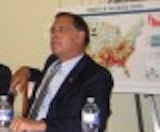
U. S. Senator John Boozman, Arkansas, at a Delta Grassroots Caucus meeting at the US Capitol
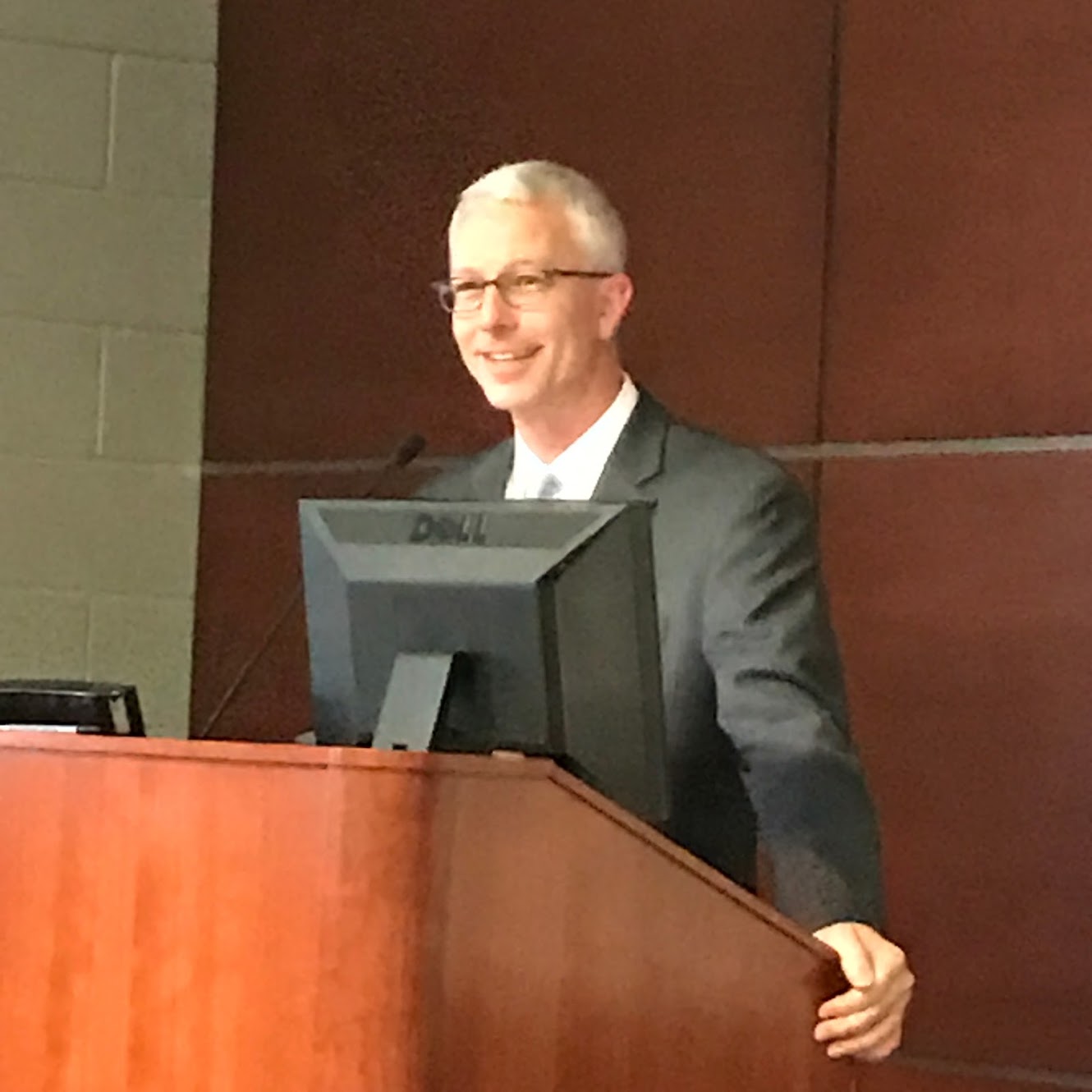
Brad Cole, Executive Director of the Municipal League of Illinois; previously a senior aide to former Republican US Sen. Mark Kirk of Illinois, earlier Mayor of Carbondale, Illinois, veteran Delta regional advocate, speaking at the Delta regional conference in West Memphis, Arkansas on April 26, 2019.

President Bill Clinton makes a comment to Delta Caucus Director Lee Powell at a meeting in Blytheville, Arkansas (in the northeast Arkansas Delta) on Nov. 2, 2014

The Delta Caucus would like to pay tribute to the late, great U.S. Sen. Thad Cochran of Mississippi, a powerful force in the US Senate for decades and a champion for the Delta. Sen. Cochran passed away on May 30, 2019. He spoke to the Delta Caucus on many occasions over the years (he is pictured above speaking to a Caucus event on Capitol Hill in Washington, DC) and his thoughtful, courteous and bipartisan leadership will be sorely missed.
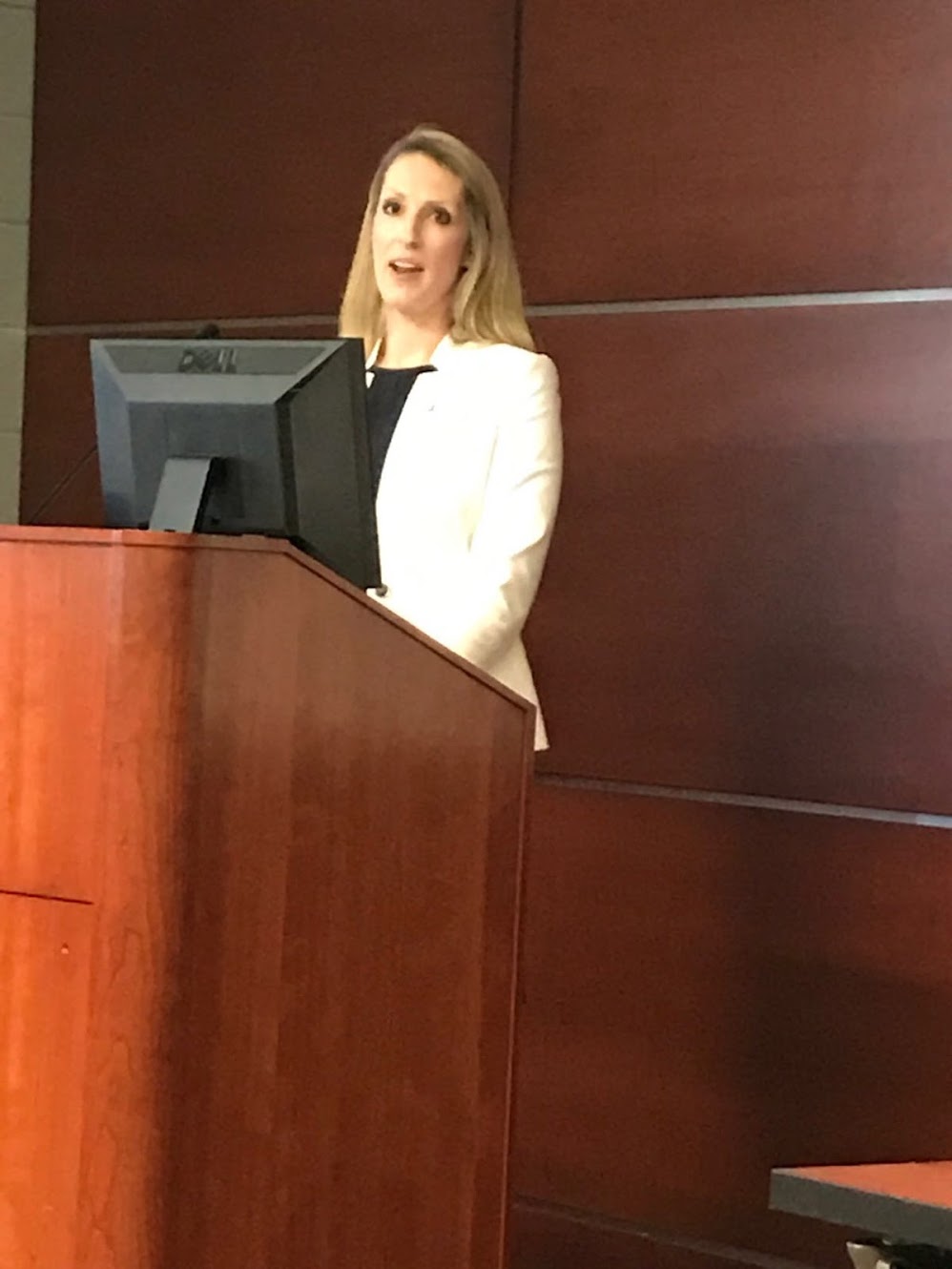
Marcie Lawson, Executive Director, Sikeston, Missouri Regional Chamber and Area Economic Development Corporation, speaking at the Delta regional conference in West Memphis, Arkansas on April 26, 2019.
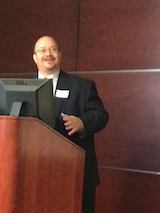
Alan Gumbel, Greater Memphis Alliance for a Competitive Workforce, Memphis, Tennessee, speaking at the Delta regional conference in West Memphis, Arkansas on April 26, 2019.
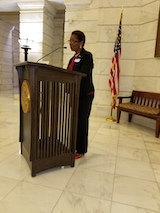
Mayor Shirley Washington of Pine Bluff, AR, speaking to the Delta Caucus at the Arkansas Capitol Rotunda in 2017.
"Caucus Releases Report on DRA's Impressive Progress, Urges Presidential Candidates to End Unfair Treatment of the Delta"
Posted on September 23, 2007 at 12:10 PM
FOR IMMEDIATE RELEASE
CONTACT: Lee Powell (202) 360-6347
OR Desha County Judge Mark McElroy (870) 877-2426
OR Clifton Avant (225) 921-4581
The Delta Regional Authority has enjoyed a sharp reversal of fortunes from the low point in 2003-2004 when the budget was severely cut down to $5 million and many observers thought the agency might be abolished, to today’s far more positive outlook including a funding range four to five times greater and an expanding range of activities promoting the Delta’s economic development. The Delta Grassroots Caucus released a report on the agency’s progress since 2003 and urged the nation’s leaders to end America’s neglect of the Delta.
“We urge Hillary Clinton, Mike Huckabee, Fred Thompson, Barack Obama and all the Presidential candidates as well as Congress to look at the progress the DRA has made in the last few years and put an end to the inexcusable disparity whereby the DRA receives a small fraction of the funding that goes to regional development commissions in Appalachia and Alaska, with energy and water appropriations in the range of $65 to $67 million in recent years as opposed to the DRA’s $12 million,” said Lee Powell, Caucus director. “And the disparity is even worse in transportation and other appropriations bills that Appalachia and Alaska also receive funding from in far larger amounts than the Delta.”
The Delta Grassroots Caucus, a nonprofit coalition of grassroots leaders in the region from southern Illinois to New Orleans, Louisiana, released a 15-page progress report on the major improvement in the federal-stage agency’s fortunes. “In 2004, the Bush administration budget requested only $2 million for the DRA, and in 2007 we have a total range of funding with even the lower end being approximately $20 million and the higher and more likely result being $25 million from three different sources–that is a quite a turn-around in just three years,” Powell said.
PROGRESS IN DRA BUDGET–This year there will be between $8 and $10 million in transportation projects channeled to the DRA area, $2 to $3 million in USDA Rural Development funding through DRA, in addition to the energy and water appropriations funding for regional economic development commissions, which has been $12 million the last three years and is likely to be at that amount again this year. The last three years the Senate voted $12 million and the House voted $6 million, and the Congress went all the way up to the Senate figure of $12 million in the House-Senate conference, and that result of $12 million or close to it is likely to happen again this fall in the final votes in Congress. The three funding streams will total in the range of $20 million to $25 million, but the most likely figure will be $25 million.
DISPARITY IN REGIONAL COMMISSIONS’ FUNDING–“We’re not accusing anybody of racism, but what kind of message does it send when a region with a predominantly white population like Appalachia absolutely dwarfs funding for the Delta, which has a large number of African Americans and a rapdily growing Hispanic population,” Powell said. “The DRA has improved tremendously in recent years and they deserve far better from our nation’s leaders.”
“While Appalachia is a large and still relatively impoverished region, it has made substantial progress over the last 40 years due to the work of the Appalachian Regional Commission, so it is long overdue for the Delta to get our fair share,” Powell said.
“And if the disparity between Appalachia and the Delta is disturbing, it is absolutely bizarre that the Denali Commission that serves several hundred thousand people in Alaska also gets vastly larger funding than the DRA, which serves nine million people,” Powell said. “In the Alaskan case, there is a substantial minority population being served there, but the huge gulf between funding for the heavily populated Delta and sparsely populated Alaska is indefensible.”
“Even at the lowest and most disappointing–and unlikely–result in the range of $20 million, that is still approximately four times larger than the funding was a few short years ago,” Powell said
DRA’S GREAT IMPROVEMENT IN RECENT YEARS–“In its early years, virtually all observers, INCLUDING MOST OF THE DELTA CAUCUS PARTNERS, thought the DRA had problems in communications, accountability and most other areas, but they have improved tremendously in the last few years as is demonstrated by their larger budget, the fact that the audits in 2005 and 2006 were favorable, and the General Accounting Office’s (GAO) commendation of the DRA for spending a high percentage of their funding in underserved rural areas,” Desha County Judge Mark McElroy, Caucus co-chair, said.
“The Presidential candidates should look at the DRA’s progress and take action by getting their budget up to a level of equality with the other regions,” Powell said.
EXECUTIVE SUMMARY
The key points in the attached report are summarized here:
MULTIPLE SOURCES OF FUNDING–Annual funding for the DRA will be determined this fall by Congress, with the best results being: $12 million in energy and water, $2 or $3 million channeled through USDA Rural Development, and $8 to $10 million in transportation projects to the DRA area, as explained below. The best results would be $25 million, but even a more disappointing total would still be approximately $20 million, which is far greater than the $5 million range at the low point in approximately 2003-04.
TRANSPORTATION–As far as directing funding into the DRA region that would not be there if the DRA did not exist, we should include the 2005 omnibus legislation that put $25 million into transportation projects in the region. The Federal Highway Administration (FHWA) and the DRA cooperated on this. SAFETEA-LU has up to $10 million for each of 4 fiscal years, and the state departments of transportation and the FHWA have the main ability to decide the details of which projects are funded. But the point is that the legislation requires that these funds be spent in the DRA region.
The $25 million over four years from the 2005 legislation is separate from and in addition to the Delta Development Highway System (DDHS) plan, which the DRA developed as part of its advocacy and strategic planning activities. The DDHS plan advocates $18.5 billion in transportation improvements, including completion of the Interstate 69 Corridor, which recently was designated a “Corridor of the Future.”
RURAL DEVELOPMENT FUNDING–In recent years the DRA has added additional projects through Rural Development to the DRA region, which are approximately $3 million. DRA administer this money, funding projects in each state with the state USDA Rural Development director. The DRA also uses part of this funding for region-wide planning such as the Delta Development Highway System and the Delta information technology plan. This money goes through DRA and the agency spends it in accordance with Rural Community Assistance Program (RCAP) regulations. This is also a very important activity of the DRA. (This funding is over and above what would normally go to the Delta states through Rural Development.)
“I will never forget that in late 2004 and as late as January, 2005, there were knowledgeable Appropriations Committee and other sources on Capitol Hill who were apprehensive that the DRA budget would be cut all the way down to $1 million or perhaps even be abolished. Look how far we have come since then!” Powell said.
DELTA DOCTORS PROGRAM–To this range of $20 to $25 million, we should always emphasize that the Delta Doctors Program has placed about 60 doctors in underserved areas of the Delta without one dime of additional appropriations. This program is based on the DRA’s authority to issue waivers to certain visa requirements to enable foreign medical school graduates to practice in medically underserved area in the Delta for at least three years, and they must provide primary care or their specialty field of service, and must treat Medicaid, Medicare and the indigent.
“The Delta Doctors Program is a tribute to the power of innovative ideas, because they have put 60 doctors in the region without costing any additional taxpayers’ dollars,” said Powell.
LEVERAGING A TOTAL INVESTMENT OF $754.9 MILLION–The DRA federal grant program from the energy and water appropriations bill, currently at $12 million, has leveraged additional funding through their ability to provide the local match. Look at these results: In its first five years, the DRA used $48.5 million in federal funds to leverage $213 million in other federal funds and $493.4 million in private sector funding for a total investment of $754.9 million.
RESULTS–This investment leads to a result of 31,000 jobs created and/or retained, over 24,240 families with new water and/or sewer service, and more than 6,235 people with job training in their local area. These figures are as of approximately a year ago, so this year’s funding will obviously increase them. The DRA gets good results from the small funding they have had.
DRA’S RARE ABILITY TO PROVIDE THE LOCAL MATCH–The DRA funding has a built-in multiplier effect, because the federal funds can be used as the local match, through a rare statutory power that the DRA has. This has opened doors that were previously closed to small, impoverished communities who could not afford the local match, and therefore missed out on major funding opportunities of a much larger amount.
“The DRA’s ability to use its federal grant program to provide the local match for small, impoverished communities that do not have the financial resources to provide a local match has opened doors to larger amounts of funding that were previously closed to them,” Powell said. “Many federal funding programs require a small local match of 10 percent or some such relatively small amounts, but if you are a tiny, impoverished community in the Delta, they might not even have that much–and that is why the DRA’s ability to provide the local match is such a powerful tool, and another demonstration of the power of innovation,” Powell said.
GREAT MAJORITY OF FUNDING GOES TO DISTRESSED AREAS–By law, 75% of the funding has to go to economically distressed counties, and 50% has to go for transportation and basic infrastructure. On both counts, the DRA surpassed the statutory requirements–70.55 % went to transportation and basic infrastructure. An impressive 94.83% of the funding was devoted to economically distressed counties.
LONG-RANGE PLANNING–The DRA first developed a strategic plan in 2002 and is now working on an updated strategic plan, in addition to the $18.5 billion Delta Development Highway System plan for completion of Interstate 69 and other transportation improvements, information technology plan, and other plans intended to be a spur toward action.
Federal Co-Chair Pete Johnson was especially wise this year to stress that the highway plan was aimed at generating action, and not just another “study”–we all know how everybody hates it when somebody comes up with another academic study that says “gee whiz, there’s a lot of poverty in the Delta.” Yep, we noticed that already, tell us something new.
COMMUNICATIONS AND ADVOCACY–the DRA disseminates useful information all the time. The Healthy Delta program and the current home-town health fairs being held across the Delta this fall are good examples of this. “Healthy Delta” is a response-oreinted media and community-based outreach and education program that disseminates information on a regular basis on health issues in general, and particularly diabetes, which has reached epidemic proportions in many parts of the region–almost 10 percent of the residents have diabetes. They have a toll-free number at 1-866-602-3300 staffed by diabetes specialists. In a move demonstrating their sensitivity to the rapidly growing Hispanic population in the Delta, they are also equipped to help Spanish-speaking callers. Federal Alternate Co-Chair Rex Nelson does a particularly good job on communications in the region.
“We are making some progress, but we still have not even gotten back to the original level of $30 million in 2000 when President Bill Clinton signed the legislation into law that created the DRA with bipartisan support in Congress led by Rep. Marion Berry and Sen. Blanche Lincoln (D-AR), and Senators Thad Cochran and Trent Lott (R-MS),” Powell said. “We commend the fine work of the Arkansas, Mississippi, Missouri and Louisiana delegations in going to bat for the Delta, but we need all eight of the Congressional delegations to work for the good of the region as well.”
Supporting the DRA should become one goal that Republicans, Democrats and Independents can join together in promoting our region’s progress. The DRA over time will be a major unifying force for the Delta.
“The next President of the United States is the leader who must end America’s shameful neglect of the Delta,” said McElroy.
Back to the top